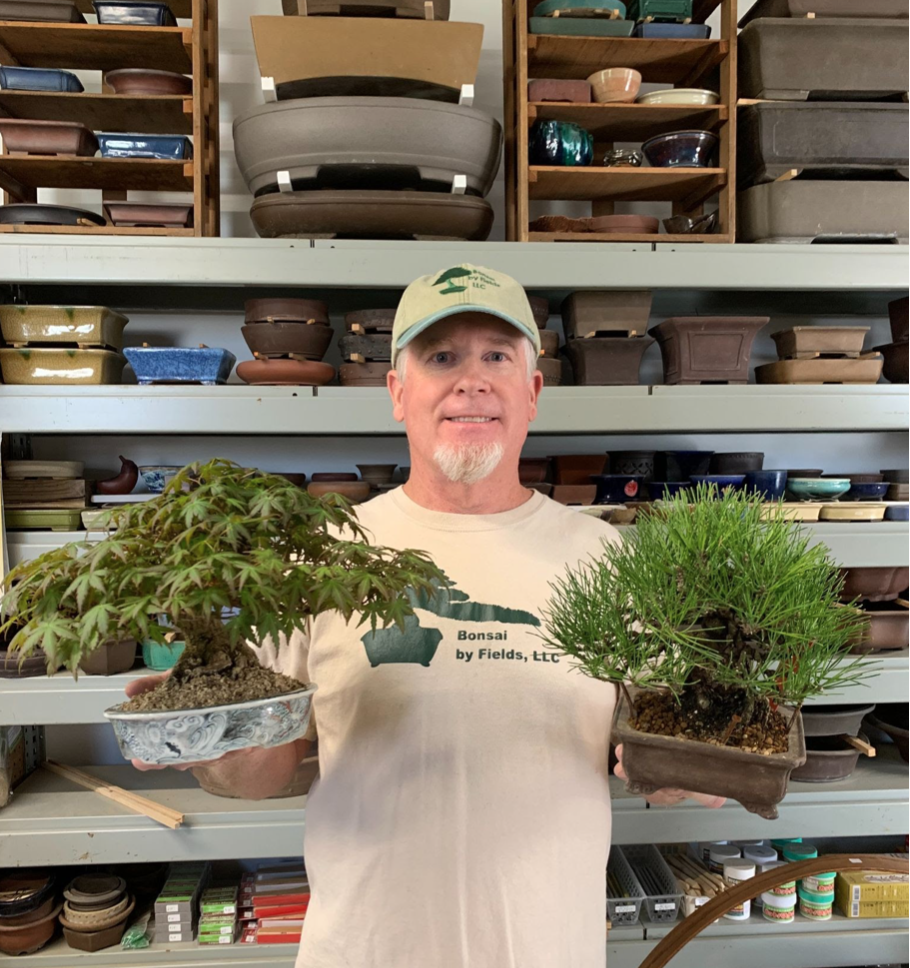Dr. Karen Harkaway with the spectacular Blue Spruce she donated to the National Bonsai and Penjing Museum.
RECENT Donations to the National Bonsai & Penjing Museum
Part 3/6
In 2024, the National Bonsai & Penjing Museum welcomed five remarkable new additions—four exquisite bonsai and a striking suiseki. Each piece tells a unique story, reflecting the artistry, history, and evolving traditions of bonsai. Carefully selected for their cultural significance and artistic merit, these new acquisitions highlight the diversity of bonsai and its growing influence in North America. Join us as we explore the fascinating origins, creative vision, and horticultural mastery behind these latest treasures.
If you work in bonsai, chances are you’ve come across a blue spruce. Picea pungens is one of the most common of the 35 species in the Pinaceae family, originating in North America, Northern Europe, and Asia. Hard to miss – but have you ever seen one like this?
In early 2024, Karen Harkaway, a former board member of the National Bonsai Foundation and president of the American Bonsai Society, donated a beautiful blue spruce to the National Bonsai & Penjing Museum.
Blue Spruce (Picea pungens), 2024.
President’s Award 2024, Mid-Atlantic Bonsai Societies.
Her captivating conifer previously appeared at the 2022 and 2024 Mid-Atlantic Bonsai Societies' Spring Festivals and the U.S. National Bonsai Exhibition in 2023, where it won the North American Award for Finest Native American Bonsai.
In its natural habitat, a blue spruce can grow up to 200 feet, enduring heavy snowfall that forces it to form dark, flakey rough bark – one of its best bonsai attributes. For a bonsai display, that protective covering provides a lovely contrast with the spruce’s vibrant green needles and potential for beautiful deadwood features.
Todd Schlafer, of Denver-based First Branch Bonsai, first collected the specimen in 2016. Two years later, Harkaway purchased the tree from Schlafer’s vendor booth at the 2018 U.S. National Bonsai Exhibition.
Harkaway’s spruce then underwent two stylings in 2019 and 2022 with Italian bonsai master Mauro Stemberger. Stemberger published videos on both the original styling and restyling, where you can learn about the importance of shade and moist, acidic soil for the spruce, as well as the duo’s styling choices.
Harkaway explains that the blue spruce had lived in a growing box and sought to regain health in her greenhouse, before its 2021 repotting with bonsai artist and former NBF board member Chase Rosade. The current moon-style container may appear as stoneware, but is actually European artist Erik Krizovensky’s cement creation – custom made to Harkaway’s specifications.
This tree is on display in the North American Pavilion at the Museum during your next visit. Don’t miss this incredible example of American artistry using a native species with a unique flair.
(click images to enlarge)
























